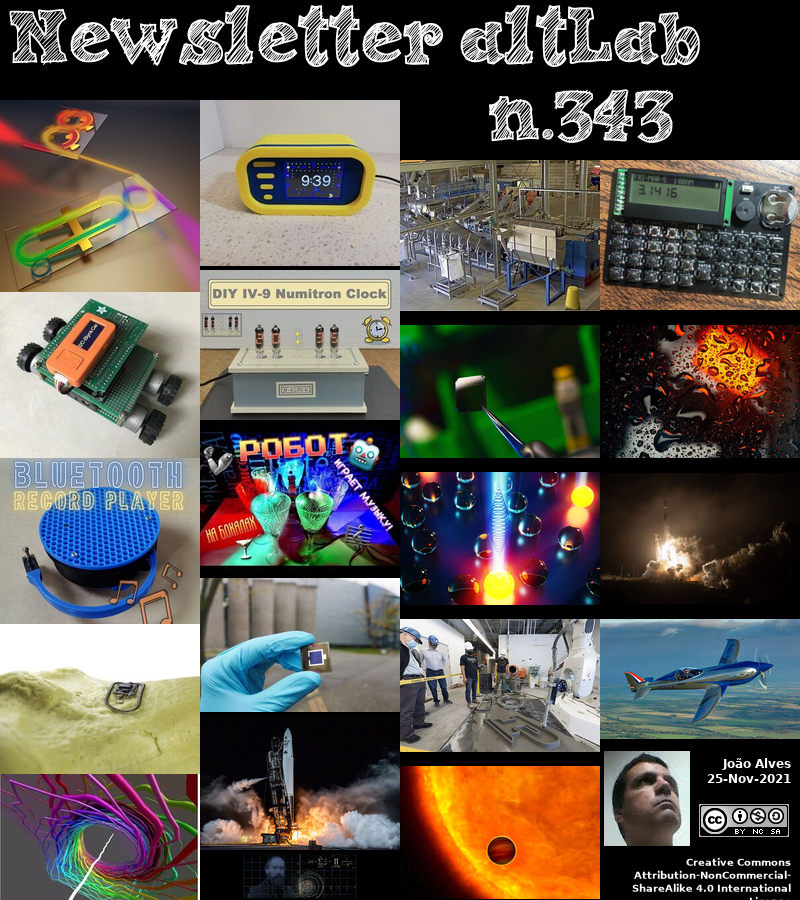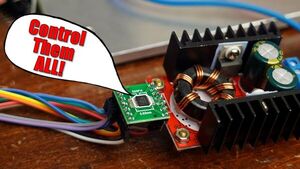2021-11-25 - Nº 343
Editorial
Esta é a Newsletter Nº 343 que se apresenta com o mesmo formato que as anteriores. Se gostar da Newsletter partilhe-a!
Todas as Newsletters encontram-se indexadas no link.
Esta Newsletter tem os seguintes tópicos:
Faz hoje anos que nascia, em 1816, o astrofísico e espectroscopista norte-americano Lewis Morris Rutherfurd. Ele fez os primeiros telescópios concebidos para fotografia celestial. Produziu um esquema de classificação de estrelas baseado nos seus espectros, tal como desenvolvido de forma semelhante pelo astrónomo italiano. Rutherfurd passou a sua vida a trabalhar no seu próprio observatório, construído em 1856, onde fotografou (desde 1858) a Lua, Júpiter, Saturno, o Sol, e estrelas até à quinta magnitude. Ao utilizar a fotografia para mapear aglomerados de estrelas, concebeu um novo micrómetro para medir distâncias entre estrelas com maior precisão. Quando Rutherford iniciou (1862) os estudos espectroscópicos, concebeu grelhas de difracção altamente sofisticadas.
Faz igualmente hoje anos que nascia, em 1835, o industrial e filantropo norte-americano nascido na Escócia Andrew Carnegie. Ele iniciou a sua carreira no negócio do ferro e do aço em 1865, focalizado no aço a partir de 1873, foi proprietário da Homestead Steel Works em 1888, e em 1899 tinha fundado a Carnegie Steel Co., que se fundiu com a United States Steel Corp. em 1901. Dedicou então o resto da sua vida à filantropia, especialmente como benfeitor de mais de 1700 bibliotecas. Também apoiou a educação pública, e a paz internacional. Os seus pais eram tecelões em teares manuais na Escócia, tornados pobres pelo advento de fábricas mecanizadas, e a família emigrou para Pittsburgh, Pensilvânia, EUA, em 1848. Aos 17 anos, tornou-se operador telegráfico, e em 1859 foi vice-presidente da Pennsylvania Railroad.
Por fim, faz hoje anos que nascia, em 1844, o engenheiro mecânico alemão Karl Benz. Ele concebeu e construiu o primeiro automóvel prático do mundo a ser movido por um motor de combustão interna. O primeiro motor que construiu foi um motor de dois tempos, que após dois anos de trabalho, funcionou pela primeira vez a 31 de Dezembro de 1879. Obteve várias patentes sobre esta máquina, e abriu uma fábrica. Depois de desenvolver apoio financeiro, Benz concebeu uma "carruagem motorizada", com um motor baseado no ciclo Otto a quatro tempos. Ao contrário de Daimler, que instalou o seu motor num carro normal, Benz concebeu não só o seu motor, mas também inovou o veículo. A 29 de Janeiro de 1886, foi-lhe concedida uma patente sobre o mesmo e a 3 de Julho de 1886, fez o primeiro test-drive automóvel público do mundo. A venda pública começou em 1888.
Nesta semana que passou a nave espacial DART foi lançada para o espaço. Trata-se da primeira missão à escala mundial para testar a tecnologia de defesa da Terra contra potenciais perigos de asteróides ou cometas. Apenas uma parte da maior estratégia de defesa planetária da NASA, o DART - construído e gerido pelo Laboratório de Física Aplicada (APL) da Johns Hopkins em Laurel, Maryland - irá colidir com um asteróide conhecido que não é uma ameaça para a Terra. O seu objectivo é alterar ligeiramente o movimento do asteróide de uma forma que possa ser medida com precisão utilizando telescópios terrestres. DART mostrará que uma nave espacial pode navegar autonomamente para um asteróide alvo e colidir intencionalmente com ele - um método de deflexão chamado impacto cinético. O teste fornecerá dados importantes para ajudar a preparar melhor um asteróide que possa representar um risco de impacto para a Terra, caso venha a ser descoberto. LICIACube, um CubeSat montado com DART e fornecido pela Agência Espacial Italiana (ASI), será libertado antes do impacto do DART para capturar imagens do impacto e da nuvem resultante de matéria ejectada. Cerca de quatro anos após o impacto do DART, o projecto Hera da ESA (Agência Espacial Europeia) realizará levantamentos detalhados de ambos os asteróides, com particular enfoque na cratera deixada pela colisão do DART e uma determinação precisa da massa do Dimorphos. A nave irá interceptar o sistema Didymos entre 26 de Setembro e 1 de Outubro de 2022, colidindo intencionalmente contra Dimorphos a cerca de 6 quilómetros por segundo.
Na Newsletter desta semana apresentamos diversas noticias, artigos científicos, projetos de maker assim como alguns videos interessantes. São apresentadas as revistas HackspaceMag Nº49 e a MagPi nº112 de Dezembro.
 João Alves ([email protected])
João Alves ([email protected])
O conteúdo da Newsletter encontra-se sob a licença  Creative Commons Attribution-NonCommercial-ShareAlike 4.0 International License.
Creative Commons Attribution-NonCommercial-ShareAlike 4.0 International License.
Novidades da Semana

NASA, SpaceX Launch DART: First Test Mission to Defend Planet Earth
"NASA’s Double Asteroid Redirection Test (DART), the world’s first full-scale mission to test technology for defending Earth against potential asteroid or comet hazards, launched Wednesday at 1:21 a.m. EST on a SpaceX Falcon 9 rocket from Space Launch Complex 4 East at Vandenberg Space Force Base in California. Just one part of NASA’s larger planetary defense strategy, DART – built and managed by the Johns Hopkins Applied Physics Laboratory (APL) in Laurel, Maryland – will impact a known asteroid that is not a threat to Earth. Its goal is to slightly change the asteroid’s motion in a way that can be accurately measured using ground-based telescopes. DART will show that a spacecraft can autonomously navigate to a target asteroid and intentionally collide with it – a method of deflection called kinetic impact. The test will provide important data to help better prepare for an asteroid that might pose an impact hazard to Earth, should one ever be discovered. LICIACube, a CubeSat riding with DART and provided by the Italian Space Agency (ASI), will be released prior to DART’s impact to capture images of the impact and the resulting cloud of ejected matter." [...]
Outras Notícias

Microchip Adds Second Development Tool Offering for Designers Using Its Low-Power PolarFire RISC-V SoC FPGA for Embedded Vision Applications at the Edge
"Platform extends customer options for designing secure and reliable systems in applications ranging from neural network inferencing to Industrial Internet of Things (IIoT) and factory automation. Microchip Technology (Nasdaq: MCHP) today announced the second development tool offering in its Smart Embedded Vision initiative for designers using its PolarFire® RISC-V System on Chip (SoC) Field Programmable Gate Array (FPGA). The industry’s lowest-power SoC FPGA in its class, the PolarFire device is the only mid-range device of its kind that simultaneously supports dual 4K video processing and quad core RISC-V application-class processors running both the Real Time Operating System (RTOS) and rich operating systems like Linux®. Microchip’s Smart Embedded Vision development platform joins the company’s previously announced VectorBlox™ software development kit (SDK) and IP for using the PolarFire devices to program a trained neural network without prior FPGA expertise. The latest offering simplifies edge-compute solution development in the thermally challenging environments of the IIoT and factory automation applications. The platform’s IP, hardware and tools for these solutions include: - Embedded Vision – Supports the following: dual 4K MIPI CSI-2 cameras; HDMI® 2.0 with expansion based on the FPGA Mezzanine Card (FMC); CoaXPress® 2.0; SDI (6 Gbps and 12 Gbps); Universal Serial 10 GE Media Independent Interface (USXGMII) MAC IP with auto-negotiation; and USB 3.1 Gen 1 and Gen 2 protocols." [...]
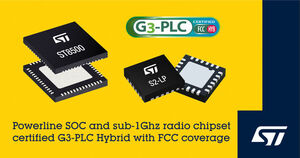
STMicroelectronics Expands Connectivity for Smart-Metering Applications with FCC Certification of G3-PLC Hybrid Chipset
"STMicroelectronics has extended the certification of its ST8500 G3-PLC (Power-Line Communication) Hybrid communication chipset, now covering the US FCC (Federal Communications Commission) band plan from 10kHz to 490kHz, in addition to the CENELEC-A 9kHz-95kHz European band. The move enables higher data rates, enhances design flexibility, and eases end-product approval in accordance with specific national regulations. The G3-PLC Hybrid profile enables smart, connected devices to select powerline or wireless communication autonomously, and change dynamically to ensure reliable connectivity and optimum performance. ST’s ST8500 G3-PLC Hybrid chipset comprises the ST8500 protocol controller System-on-Chip (SoC), which supports RF mesh for reliable long-range wireless communication, the STLD1 PLC line driver, and the S2-LP low-power IEEE 802.15.4 RF transceiver. In addition to smart electricity meters, the chipset delivers robust and reliable connectivity for gas and water smart meters, environmental monitors, lighting controllers, and remote sensors in contexts such as smart cities, smart infrastructure, smart buildings, and smart factories. To accelerate development of smart, connected nodes that leverage the G3-PLC Hybrid profile for dual PLC and RF connectivity, ST has created a support ecosystem that includes the EVLKST8500GH868 and EVLKST8500GH915 development kits that work respectively at 868MHz and 915MHz." [...]

Renesas and Panthronics introduce new cost- and space-saving design for secure mobile PoS terminals
"Streamlined design for EMVCo 3.0-compliant contactless payment terminal is based on PTX100R NFC reader and Renesas RA Family secure MCU, avoiding the need for a discrete Secure Element or a dedicated – and expensive – PoS system-on-chip Panthronics AG, a fabless semiconductor company specializing in high performance wireless technology, and Renesas Electronics Corporation (TSE: 6723), a premier supplier of advanced semiconductor solutions, today announced a new design which provides manufacturers of secure mobile point-of-sale (mPoS) contactless payment terminals with a new way to reduce the size and the bill-of-materials cost of their products without compromising performance or security. The companies are demonstrating the new mPoS design at the Panthronics stand 5.2 B041 at the Trustech exhibition (Paris, France, 30 November-2 December 2021). The design is based on Panthronics’ PTX100R NFC Reader IC for contactless communication, and the Renesas RA6M4 general-purpose secure microcontroller (MCU). The RA6M4 MCU, which has an Arm® Cortex®-M33 CPU with TrustZone technology and integrated security IP, performs all the cryptographic, key management and other security functions required for compliance with the stringent Payment Card Industry (PCI) security standards and the EMVCo Level 2 standard for contactless payments. EMVCo Level 1-compliant software runs in the PTX100R. This design based on a secure MCU offers substantial cost and size advantages over conventional mPoS terminal designs." [...]
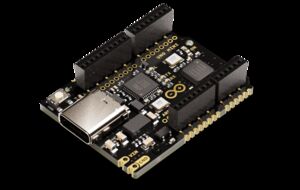
Introducing the Arduino UNO Mini Limited Edition: Pre-orders now open
"The iconic Arduino board is back, in the shape of the UNO Mini Limited Edition. Pre-orders have just gone live, so don’t dawdle if you want to get your hands on this stunning piece of Arduino history. 10 Million Makers Can’t Be Wrong The UNO Mini Limited Edition is here to celebrate a pretty epic milestone in Arduino’s history. The iconic board, which first launched back in 2010, has become synonymous with Arduino itself. It’s like the company and the board are inextricably linked in the minds of makers around the world. For many, Arduino is the UNO." [...]

‘Spirit of Innovation’ stakes claim to be the world’s fastest all-electric vehicle
"We believe our all-electric ‘Spirit of Innovation’ aircraft is the world’s fastest all-electric aircraft, setting three new world records. We have submitted data to the Fédération Aéronautique Internationale (FAI) – the World Air Sports Federation who control and certify world aeronautical and astronautical records – that at 15:45 (GMT) on 16 November 2021, the aircraft reached a top speed of 555.9 km/h (345.4 mph) over 3 kilometres, smashing the existing record by 213.04 km/h (132mph). In further runs at the UK Ministry of Defence’s Boscombe Down experimental aircraft testing site, the aircraft achieved 532.1km/h (330 mph) over 15 kilometres – 292.8km/h (182mph) faster than the previous record – and broke the fastest time to climb to 3000 metres by 60 seconds with a time of 202 seconds, according to our data. We hope that the FAI will certify and officially confirm the achievements of the team in the near future. During its record-breaking runs, the aircraft clocked up a maximum speed of 623 km/h (387.4 mph) which we believe makes the ‘Spirit of Innovation’ the world’s fastest all-electric vehicle. Warren East, CEO, Rolls-Royce, said: “Staking the claim for the all-electric world-speed record is a fantastic achievement for the ACCEL team and Rolls-Royce." [...]

Astra Reaches Orbit
"Astra Space, Inc., successfully completed its first commercial orbital launch for the United States Space Force late Friday night, November 19, 2021, PST. The launch, STP-27AD2, was conducted from Astra’s Kodiak Spaceport, located at the Pacific Spaceport Complex in Kodiak, Alaska. Astra’s launch system successfully demonstrated the orbital placement of a test payload to an inclination of 86.0 degrees at an altitude of 500 km. The payload achieved an orbital velocity of 7.61 kilometers per second in 8 minutes and 47 seconds. “Reaching orbit is a historic milestone for Astra,” said Chris Kemp, Founder, Chairman and CEO of Astra. “We can now focus on delivering for our customers and scaling up rocket production and launch cadence.” The United States Space Force contracted this launch through a Defense Innovation Unit Other Transaction Agreement." [...]

Parker Solar Probe Completes a Record-Setting Swing by the Sun
"Blazing along at space-record speeds that would get it from Earth to the Moon in under an hour, NASA’s Parker Solar Probe completed its 10th close approach to the Sun on Nov. 21, coming within 5.3 million miles (8.5 million kilometers) of the solar surface. The close approach (known as perihelion), also at a record distance, occurred at 4:25 a.m. EST (8:25 UTC), with Parker Solar Probe moving 364,660 miles per hour (586,864 kilometers per hour). The milestone also marked the midway point in the mission’s 10th solar encounter, which began Nov. 16 and continues through Nov. 26. The spacecraft entered the encounter in good health, with all systems operating normally. Parker Solar Probe is scheduled to check back in with mission operators at the Johns Hopkins Applied Physics Laboratory in Laurel, Maryland – where it was also designed and built – on Nov 24. The spacecraft will transmit science data from the encounter – largely covering the properties and structure of the solar wind as well as the dust environment near the Sun – back to Earth from Dec. 23-Jan." [...]
Ciência e Tecnologia

“Magic wand” reveals a colorful nano-world
"Scientists have developed new materials for next-generation electronics so tiny that they are not only indistinguishable when closely packed, but they also don’t reflect enough light to show fine details, such as colors, with even the most powerful optical microscopes. Under an optical microscope, carbon nanotubes, for example, look grayish. The inability to distinguish fine details and differences between individual pieces of nanomaterials makes it hard for scientists to study their unique properties and discover ways to perfect them for industrial use. In a new report in Nature Communications, researchers from UC Riverside describe a revolutionary imaging technology that compresses lamp light into a nanometer-sized spot. It holds that light at the end of a silver nanowire like a Hogwarts student practicing the “Lumos” spell, and uses it to reveal previously invisible details, including colors. The advance, improving color-imaging resolution to an unprecedented 6 nanometer level, will help scientists see nanomaterials in enough detail to make them more useful in electronics and other applications." [...]

Big Batteries on Wheels Can Deliver Zero-Emissions Rail While Securing the Grid
"Berkeley Lab study shows how battery-electric trains can deliver environmental justice, cost-savings, and resilience to the U.S. Trains have been on the sidelines of electrification efforts for a long time in the U.S. because they account for only 2% of transportation sector emissions, but diesel freight trains emit 35 million metric tons of carbon dioxide annually and produce air pollution that leads to $6.5 billion in health costs, resulting in an estimated 1,000 premature deaths each year. What’s more, these deaths and adverse health impacts disproportionately affect disadvantaged and low-income communities, which are more likely to be located near freight rail yards and railways. The recent dramatic decline in battery prices has created a new possibility for electrification of freight trains. Researchers from the U.S. Department of Energy’s Lawrence Berkeley National Laboratory (Berkeley Lab), collaborating with UCLA and UC Berkeley researchers, make the case that the U.S. can retrofit diesel-electric trains with batteries in a way that is cost-competitive with diesel. Doing so would avoid these unnecessary deaths and health impacts and save the U.S. freight rail sector $94 billion over 20 years from reduced air pollution and carbon dioxide emissions." [...]
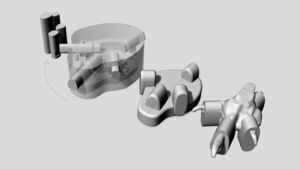
Birds of prey wear 3D-printed shoes to treat foot disease
"3D printing technology now has a new addition to its list of useful applications – producing protective shoes for birds. In a first for Asia, Jurong Bird Park’s avian veterinary team and the Keio-NUS CUTE Center at the National University of Singapore (NUS) jointly embarked on a two-year effort to create silicone shoes casted from 3D printed moulds for the wildlife park’s birds of prey. This collaboration has achieved an effective treatment plan for a medical condition known as pododermatitis or ‘bumblefoot’ in birds. Pododermatitis results in pressures sores, tissue swelling and callouses, and if left untreated, could become disabling and even fatal. The protective silicone shoes were designed to relieve and redistribute pressure on the weight-bearing surface of the patient’s feet, as well as aid in the recovery of the degenerative condition of the avian foot. Under certain conditions, some birds tend to spend longer periods perched on their feet." [...]
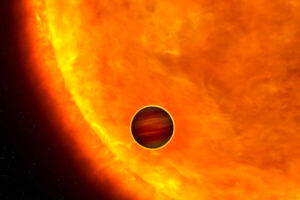
One year on this giant, blistering hot planet is just 16 hours long
"A newly discovered “ultrahot Jupiter” has the shortest orbit of any known gas giant. The hunt for planets beyond our solar system has turned up more than 4,000 far-flung worlds, orbiting stars thousands of light years from Earth. These extrasolar planets are a veritable menagerie, from rocky super-Earths and miniature Neptunes to colossal gas giants. Among the more confounding planets discovered to date are “hot Jupiters” — massive balls of gas that are about the size of our own Jovian planet but that zing around their stars in less than 10 days, in contrast to Jupiter’s plodding, 12-year orbit. Scientists have discovered about 400 hot Jupiters to date. But exactly how these weighty whirlers came to be remains one of the biggest unsolved mysteries in planetary science." [...]

Fundamental particles modelled in beam of light
"Scientists at the University of Birmingham have succeeded in creating an experimental model of an elusive kind of fundamental particle called a skyrmion in a beam of light. The breakthrough provides physicists with a real system demonstrating the behaviour of skyrmions, first proposed 60 years ago by a University of Birmingham mathematical physicist, Professor Tony Skyrme. Skyrme’s idea used the structure of spheres in 4-dimensional space to guarantee the indivisible nature of a skyrmion particle in 3 dimensions. 3D particle-like skyrmions are theorised to tell us about the early origins of the Universe, or about the physics of exotic materials or cold atoms. However, despite being investigated for over 50 years, 3D skyrmions have been seen very rarely in experiments. The most current research into skyrmions focuses on 2D analogues, which shows promise for new technologies." [...]

Getting quantum dots to stop blinking
"New approach solves a persistent problem of intermittency that has hindered use of the tiny light emitters for biological imaging or quantum photonics. Quantum dots, discovered in the 1990s, have a wide range of applications and are perhaps best known for producing vivid colors in some high-end televisions. But for some potential uses, such as tracking biochemical pathways of a drug as it interacts with living cells, progress has been hampered by one seemingly uncontrollable characteristic: a tendency to blink off at random intervals. That doesn’t matter when the dots are used in the aggregate, as in TV screens, but for precision applications it can be a significant drawback. Now, a team of chemists at MIT has come up with a way to control this unwanted blinking without requiring any modification to the formulation or the manufacturing process. By firing a beam of mid-infrared laser light for an infinitesimal moment — a few trillionths of a second — the quantum dot’s blinking is eliminated for a relatively long period, tens of billions of times longer than the laser pulse." [...]
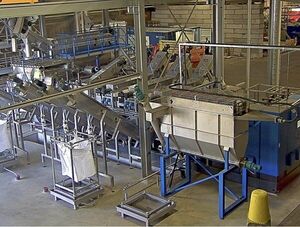
Improving plastic waste separation with magnetic fields
"In 2018, 61.8 million metric tons of plastic waste was produced in the European Union with only 9.4 million metric ton recycled. This constitutes a huge amount of plastic waste, which rapidly needs to be addressed. One solution is to turn to magnetic density separation, which can separate plastic materials using magnetic fields, but this technique is not always effective. Rik Dellaert studied flows of plastic particle mixtures in wind tunnels to assess the effect of turbulence on the separation process. He’ll defend his PhD thesis on November 26th at the department of Applied Physics. Plastic is a versatile material that is used for a wide range of applications in society." [...]

World record again at HZB: Almost 30 % efficiency for next-generation tandem solar cells
"Three HZB teams led by Prof. Christiane Becker, Prof. Bernd Stannowski and Prof. Steve Albrecht have jointly managed to increase the efficiency of perovskite silicon tandem solar cells fabricated completely at HZB to a new record value of 29.80 %. The value has now been officially certified and is documented in the NREL-charts. This brings the 30 percent mark within reach. Today's solar modules are mainly made of silicon, and possibilities for further increases in efficiency have already been largely exploited. But since 2008, the material class of "metal halide perovskites" has moved into the focus of research: these semiconductor compounds convert sunlight into electrical energy very well and still offer a lot of room for improvement. In particular, they can be combined with silicon solar cells to tandem solar cells that use sunlight much more efficiently." [...]
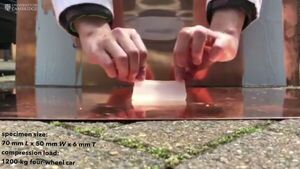
‘Super jelly’ can survive being run over by a car
"Researchers have developed a jelly-like material that can withstand the equivalent of an elephant standing on it, and completely recover to its original shape, even though it’s 80% water. The soft-yet-strong material, developed by a team at the University of Cambridge, looks and feels like a squishy jelly, but acts like an ultra-hard, shatterproof glass when compressed, despite its high water content. The non-water portion of the material is a network of polymers held together by reversible on/off interactions that control the material’s mechanical properties. This is the first time that such significant resistance to compression has been incorporated into a soft material. The ‘super jelly’ could be used for a wide range of potential applications, including soft robotics, bioelectronics or even as a cartilage replacement for biomedical use. The results are reported in the journal Nature Materials." [...]
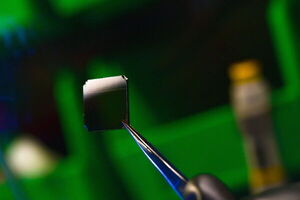
Ultrathin solar cells get a boost
"Rice lab finds 2D perovskite compound has the right stuff to challenge bulkier products Rice University engineers have achieved a new benchmark in the design of atomically thin solar cells made of semiconducting perovskites, boosting their efficiency while retaining their ability to stand up to the environment. The lab of Aditya Mohite of Rice’s George R. Brown School of Engineering discovered that sunlight itself contracts the space between atomic layers in 2D perovskites enough to improve the material’s photovoltaic efficiency by up to 18%, an astounding leap in a field where progress is often measured in fractions of a percent. “In 10 years, the efficiencies of perovskites have skyrocketed from about 3% to over 25%,” Mohite said. “Other semiconductors have taken about 60 years to get there. That’s why we’re so excited.” The research appears in Nature Nanotechnology. Perovskites are compounds that have cubelike crystal lattices and are highly efficient light harvesters." [...]
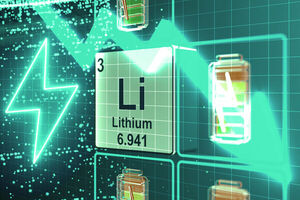
The reasons behind lithium-ion batteries’ rapid cost decline
"A new study finds that investments in R&D on materials and chemistry were key, while economies of scale contributed somewhat less. Lithium-ion batteries, those marvels of lightweight power that have made possible today’s age of handheld electronics and electric vehicles, have plunged in cost since their introduction three decades ago at a rate similar to the drop in solar panel prices, as documented by a study published last March. But what brought about such an astonishing cost decline, of about 97 percent? Some of the researchers behind that earlier study have now analyzed what accounted for the extraordinary savings. They found that by far the biggest factor was work on research and development, particularly in chemistry and materials science. This outweighed the gains achieved through economies of scale, though that turned out to be the second-largest category of reductions." [...]
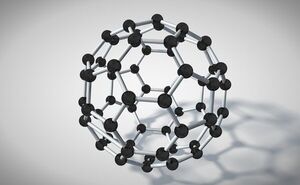
New Ultrahard Diamond Glass Synthesized
"Carnegie’s Yingwei Fei and Lin Wang were part of an international research team that synthesized a new ultrahard form of carbon glass with a wealth of potential practical applications for devices and electronics. It is the hardest known glass with the highest thermal conductivity among all glass materials. Their findings are published in Nature. Function follows form when it comes to understanding the properties of a material. How its atoms are chemically bonded to each other, and their resulting structural arrangement, determines a material’s physical qualities—both those that are observable by the naked eye and those that are only revealed by scientific probing. Carbon is unrivaled in its ability to form stable structures—alone and in combination with other elements." [...]

Shifting colors for on-chip photonics
"The ability to precisely control and change properties of a photon, including polarization, position in space, and arrival time, gave rise to a wide range of communication technologies we use today, including the Internet. The next generation of photonic technologies, such as photonic quantum networks and computers, will require even more control over the properties of a photon. One of the hardest properties to change is a photon’s color, otherwise known as its frequency, because changing the frequency of a photon means changing its energy. Today, most frequency shifters are either too inefficient, losing a lot of light in the conversion process, or they can’t convert light in the gigahertz range, which is where the most important frequencies for communications, computing, and other applications are found. Now, researchers from the Harvard John A. Paulson School of Engineering and Applied Sciences (SEAS) have developed highly efficient, on-chip frequency shifters that can convert light in the gigahertz frequency range. The frequency shifters are easily controlled, using continuous and single-tone microwaves." [...]

How positively and negatively charged ions behave at interfaces
"When charged particles enter the boundary layer between a liquid and an electrode, they first have to strip off their water shells. How positively and negatively charged ions behave at the interface between a solid surface and an aqueous solution has been investigated by researchers from the Cluster of Excellence RESOLV at the Ruhr-Universität Bochum, its sister research network CALSOLV in Berkeley, and the University of Evry in Paris. At the SOLEIL synchrotron, they were able to use terahertz spectroscopy to observe exactly when and how the water shells around sodium and chloride ions are stripped away when voltages are applied in an electrolyte solution. They describe their results in the journal Proceedings of the National Academy of Sciences of the United States of America, or PNAS, published online on 15 November 2021. Electrochemical double layer between electrolyte and solid interface Electrolytes are chemical compounds in which separate ions occur. For example, when sodium chloride (NaCl) is dissolved in water, the positively charged sodium ions and the negatively charged chloride ions separate and can move freely in the solution." [...]

The Riemann conjecture unveiled by Physics
"The new piece of research, carried out by by Giuseppe Mussardo, professor of Theoretical Physics at SISSA, and Andrè Leclair of Cornell University (USA) has just been published in the Journal of Statistical Mechanics (JSTAT) A mystery of mathematics that has remained unsolved for more than 150 years can be unraveled thanks to a completely unexpected approach coming from statistical physics. This is the important conclusion of Giuseppe Mussardo, professor of Theoretical Physics at SISSA, and Andrè Leclair of Cornell University (USA) reported in an article just published in the Journal of Statistical Mechanics (JSTAT). The two scientists have shown that not only one can arrive at the solution to one of the most famous problems in mathematics, the Riemann conjecture, but that it is the physics of chaotic motions and the probability laws that regulate them that provide the elegant key to understand this great mathematical enigma. The research behind the article just published, lasted three years and the final part of it, the authors said, was "a real tour de force in the data analysis of an incredibly large set of prime numbers, the basic constituents of arithmetic, i.e. the real atoms of mathematics ”. Infinite zeros along a vertical line: an enigma that has lasted since 1859 The fact that mathematics provides physics with the right language to formulate the laws of the Nature is in the logic of things." [...]
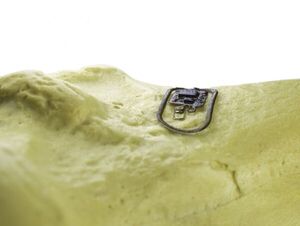
UArizona Researchers Develop Ultra-Thin 'Computer on the Bone'
"Engineers and physicians teamed up to develop a wireless device to monitor and protect bone health. A team of University of Arizona researchers has developed an ultra-thin wireless device that grows to the surface of bone and could someday help physicians monitor bone health and healing over long periods. The devices, called osseosurface electronics, are described in a paper published Thursday in Nature Communications. "As a surgeon, I am most excited about using measurements collected with osseosurface electronics to someday provide my patients with individualized orthopedic care – with the goal of accelerating rehabilitation and maximizing function after traumatic injuries," said study co-senior author Dr. David Margolis, an assistant professor of orthopedic surgery in the UArizona College of Medicine – Tucson and orthopedic surgeon at Banner – University Medical Center Tucson. Fragility fractures associated with conditions like osteoporosis account for more days spent in the hospital than heart attacks, breast cancer or prostate cancer. Although not yet tested or approved for use in humans, the wireless bone devices could one day be used not only to monitor health, but to improve it, said study co-senior author Philipp Gutruf, an assistant professor of biomedical engineering and Craig M. Berge faculty fellow in the College of Engineering." [...]
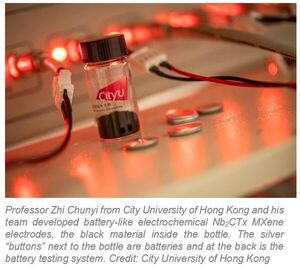
Developing high-performance MXene electrodes for next-generation powerful battery
"Two-dimensional MXene has been a rising star in the energy world as this material can store energy fast. But their unstable voltage output limits their applications. A collaborative research team led by scientists from City University of Hong Kong (CityU) has recently developed battery-like electrochemical Nb2CTx MXene electrodes with stable voltage output and high energy density by using a high-voltage scanning strategy. These latest findings may lead to a breakthrough in inventing the powerful battery of the next generation. The research was jointly led by Professor Zhi Chunyi and Assistant Professor Dr Fan Jun from the Department of Materials Science and Engineering (MSE). Chair Professor Chen Furong from MSE also made a huge contribution to this research." [...]

Plumbing the Depths: Defect Distribution in Ion-Implanted SiC Diodes
"Silicon carbide (SiC) unipolar semiconductors are in wide commercial use, but their operations are limited by a trade-off relationship between breakdown voltage and specific resistance of the drift layer, or specific on-resistance. Including a super junction structure, which refers to an arrangement of n and p layers in trenches in the drift layer, or enabling bipolar operation in the device, provides a way to overcome this unipolar limit. Bipolar operation brings about a large decrease in on-resistance by inducing a conductivity modulation in the drift layer. But bipolar operation is not without its disadvantages. Conduction and switching losses in bipolar devices need to be carefully balanced. P-type contact layers in semiconductors are generally formed via aluminum (Al) doping." [...]

Purdue researchers test 3D concrete printing system as part of NSF-funded project
"Transitioning to clean wind energy could become more cost-efficient as Purdue University researchers test a new technology created by an international startup to anchor offshore wind turbines. RCAM Technologies, which has offices in the U.S. and U.K., received a Phase I Small Business Technology Transfer grant from the National Science Foundation to develop concrete, 3D-printed suction anchors to replace traditional anchors for offshore wind plants. Research will be conducted at the Robert L. and Terry L. Bowen Laboratory for Large-Scale Civil Engineering Research in Purdue's College of Engineering. Gabriel Falzone, director of operations at RCAM Technologies, said traditional anchors for floating offshore wind plants are made from steel. This makes them expensive and carbon-intensive; they also require large vessels for installation. "Our concrete, 3D-printed suction anchors will reduce the cost of anchors by up to 90% compared with traditional drag anchors when used in a shared mooring configuration," Falzone said." [...]
Documentação
A documentação é parte essencial do processo de aprendizagem e a Internet além de artigos interessantes de explorar também tem alguma documentação em formato PDF interessante de ler. Todos os links aqui apresentados são para conteúdo disponibilizado livremente pelo editor do livro.

HackSpace magazine #49
"There’s a lot be said for LEGO: you can make just about anything with it, including functional pieces. It’s easy to build, break down and re-build with it. And now it’s also easy to program it, to make it smart and build it into some seriously advanced tech projects. We’ll show you how! Play tricks on the puny human brain with stereo photography Make MIDI beats and bleeps with a Raspberry Pi Pico Give oomph to your power tools with compressed air Get to grips with your new favourite embedded computer: the Raspberry Pi Zero 2 W" [...]
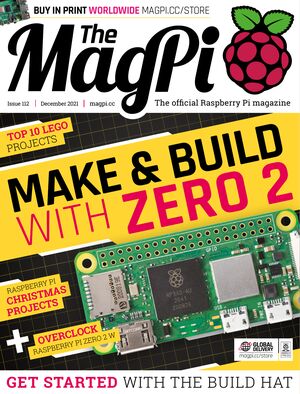
The MagPi 112
"Make & Build with Zero 2. Discover 40 incredible projects that make the most out of Zero 2 W’s faster 1GHz quad-core processor. Build radio sets, robots, retro games consoles and more. Build Christmas Gifts with Raspberry Pi. Use your skills to make presents for people this holiday season. Get started with the Raspberry Pi Build HAT." [...]
Projetos Maker
Diversos Projetos interessantes.

Scoppy
"Scoppy is an oscilloscope and logic analyzer powered by your Android phone/tablet and Raspberry Pi Pico. Signals are measured by the Pico and the waveforms are displayed on the Android device. No programming is required and both the app and firmware are free to download. Installation is super easy and should only take a few minutes. The aim of the Scoppy project is to give electronics novices and hobbyists access to an ultra-ultra cheap oscilloscope that is useful for viewing low voltage, low frequency signals. Scoppy is also a logic analyzer with a sample rate of 25MS/s." [...]

Arduino 2-Digit 0.5″ Common Cathode 7 Segment Display Module
"This is an Arduino compatible board for creating 2 Digit Display projects. The circuit operates with 5V DC, Connector CN1 is provided for bootloader programming and Arduino firmware upload. A new Atmega328 chip requires a bootloader and Arduino firmware programming, Connector CN1 helps you with both functions. Follow the link below to learn more about programming using Arduino. Arduino code is available as a download to test the board. " [...]
Arduino Robot Plays Music on Wine Glasses
"Hello everyone, today I will tell you about how I assembled an arduino robot that plays music on wine glasses. And so, let's take everything in order. To implement the project, I will need: wine glasses, a stepper motor, a car relay, a4988 stepper motor driver - an arduino nano will manage the whole thing. You can write the melody yourself or find a ready-made one on the musicboxmaniacs website. If you use a ready-made melody, then first you need to remove polyphony from it - this means that there should not be more than one note in one musical measure. After that, transfer it manually in the following order: the lowest note has a value of 0, and so on up to the highest." [...]
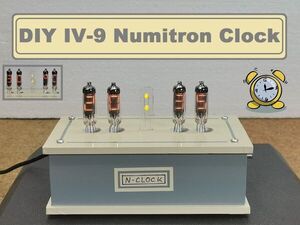
DIY simplest IV9 Numitron clock with Arduino
"Nice looking and simple to build Retro style Numitron tubes clock. This time I will show you how to make a nice Retro style Numitron tubes clock. In addition to the correct time, the device briefly displays the Date, Year, and Current Temperature every 30 seconds. For 74HC595 IC The total maximum current according to the datasheet is 70 milliamperes, which in this case is several times exceeded (about 160 milliamperes for digit 8), so that after a while the IC overheats and does not work properly. Another lack is that there are too many delays in the loop of code so the time is read only once in 60 seconds. In the picture you can see the finished clock made primarily according to the instructions on the page above." [...]
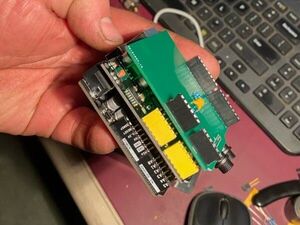
Whole House energy monitor
"Whole house energy monitor that monitors a split phase 120/240 service and publishes to blynk. I've been wanting to create a whole home energy monitor for my house for awhile now. I could not find a project anywhere for a split phase north American style service so I finally muttled together one and am quite happy with the results. Most of my favorite projects with an Arduino now involve Blynk. If you haven't used Blynk in any of your projects yet I suggest you look into it because it is a very versatile IOT server with an app for most smart phones that opens endless possibilities. I hope you all bear with me because I'm quite novice when it comes to arduino and this is the first project I will be uploading." [...]
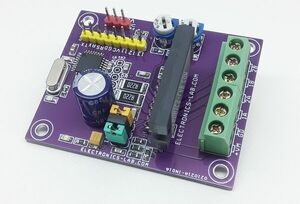
2.5A Bipolar Stepper Driver with Micro-Stepping, Current and Decay Control – Arduino Compatible
"This is an Arduino compatible board that contains an Atmega328 microcontroller and Bipolar Stepper Motor Driver chip STK682-010. This Hybrid IC from ON Semiconductor can deliver up to 2.5A current and it can have an input supply up to 32V DC. It has multiple micro-stepping options such as Full step, 1/2th Step, 1/4th Step, 1/8th Step, 1/16th Step, 1/32th Step, 1/64th Step, 1/128th Step. PR1 trimmer potentiometer is provided to set the decay, 3.5V Slow Decay, 1.1V to 3.1V Mixed Decay, 0.8V-1V Fast Decay, and PR2 Trimmer Potentiometer provided to set the output current. Chopping frequency set to 83.3 Khz using capacitor C5 100PF. Micro-Stepping can be set with the help of jumper J1, J2, J3." [...]

ESP32 Pacman Clock
"Build and customize your own ESP32 Pacman Clock with vibrant colors and your own favorite alarm audio track. Great as an alarm clock or just a cool accessory under your desk monitor. Powered by an ESP32 with a touch screen it has very few components and synchronizes time over wifi. Users can also interact with the battle between the characters via the touch screen along with Ms Pacman and variable animation speed. A great gift to build or give to your DIY electronics or Retro Gaming friends! Background A few years ago I developed the code for a Pacman clock which proved to be very popular, however, the build was complex, and the parts were expensive so I wanted to make it more accessible to other makers." [...]

The Robot Head Project - 2 Degree of Freedom Gimbal
"I originally saw the mechanism for this project on Youtube. I wanted to create this in a fully 3d printable form because it's an interesting interactive mechanism. I also thought it would make for a fun kinetic sculpture! This video shows the engineering process behind RobBob the robot. In the animation, 1 motor controls the rotation of the head through the yellow shaft and bevel gear. The tilt of the head can be controlled by rotating both motors together." [...]
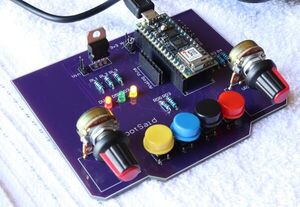
DIY Photoshop Editing Console using Arduino Nano RP 2040
"Easy way to control Adobe Photoshop using Arduino HID Functionality - Make it easier for you to edit images in photoshop! Making a DIY Photoshop Editing Console What if there was something that we could use to quickly change or swap between the tools in Adobe Photoshop with just one button push? Or, say you’re editing video clips and want more control over your brush size – what then. You all know what photoshop is right? It’s software used for digital image manipulation! There are lots of options within it which give us greater flexibility when working on our projects." [...]
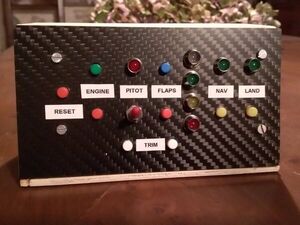
Switch/LED Panel with Arduino for FS2020
"A simple panel to add some commands and status LEDs for Microsoft Flight Simulator 2020 on a PC If you are a Flight Simulator enthusiast and would try to build your first external panel to send some commands and read some status from FS, probably you will be interested in this project because it's simple, flexible and cheap. This project will let you play with some Arduino programming code but don't need any development effort on the PC side. On the other end you will play also with some very simple hardware stuff other then an Arduino board of any type (i used a Nano). The most important thing, however, is that with a very little effort, thepanel can be highly customized to your needs by changing the function of each button/switch/LED or adding new ones. What it does The panel manages and shows the state of: - flaps incrementing/decrementing them to max 4 positions - navigation lights (grouped in STROBE, NAV, BEACON, WING, LOGO, CABIN and PANEL) - landing lights (grouped in LANDING and TAXI) - pitot heat - rudder trim - engine(s) startup and shutdown with AUTO_START and AUTO_SHUTDOWN functions of simulator - in addition I have also a RESET button that is useful when starting the flight to be sure about the state of all the lights of the plane" [...]
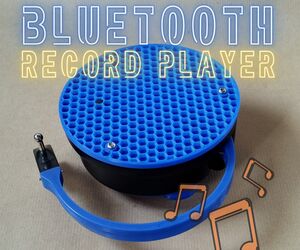
Building a Portable Bluetooth Spinning Record Player
"Hello fellow makers, In this Instructable I would like to show you a prototype for a portable record player that I'm busy designing. The idea is to have a small easily transportable record player where the record remains stationary and the player spins, the music is then transmitted to a Bluetooth speaker or headphones via the built in Bluetooth transmitter. For now it is in it's most basic form as I just wanted to test the concept but moving forward I want to keep this an open source project that people can make and alter to their needs. It is for now very much still a work in progress as I try and perfect it, but I would love if the Instructable community joins me on this journey. In its current state the drive system along with the Bluetooth transmitting is working flawlessly I just need to perfect the tonearm design without sacrificing portability. Join me on the journey I've taken so far... To make your own you will need the following: - Access to a 3D printer - 5V DC motor with worm gearbox - Ceramic record player cartridge - USB Bluetooth audio transmitter - Arduino Nano or smaller - H-Bridge motor driver - *Arduino and motor driver can be replaced by a PWM motor speed controller." [...]
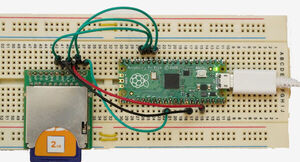
BASIC Interpreter for the Raspberry Pi Pico
"The PicoMite is a Raspberry Pi Pico running the free MMBasic interpreter. MMBasic is a Microsoft BASIC compatible implementation of the BASIC language with floating point, integer and string variables, arrays, long variable names, a built in program editor and many other features. Using MMBasic you can use communications protocols such as I2C or SPI to get data from a variety of sensors. You can save data to an SD card, display information on colour LCD displays, measure voltages, detect digital inputs and drive output pins to turn on lights, relays, etc. All from inside this low cost microcontroller. The PicoMite firmware is totally free to download and use." [...]

15C, 16c or 41c take your pick, Build you're own Classic HP Calculator Emulator
"I have used HP RPN calculators all my life. I wonder why there aren’t any RPN calculators anymore. They have been phased out in favor of the standard infix calculators. Anyway, I've always wanted an HP15c calculator and never got the chance to buy one. So this is my take on building one. It is designed with only through hole parts." [...]
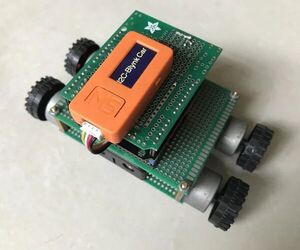
I2C Blynk Car With Attiny85 and M5StickC
"This project shows you how to build your own I2C DC motor drive using a DigiSpark Attiny85 plus Arduino motor shield. To test its operation, I made a small RC car which used an M5StickC & connected to Blynk App. to communicate with this drive via the I2C protocol. Please check my introduction video before getting started. a. Main materials: - 1pcs x M5StickC." [...]
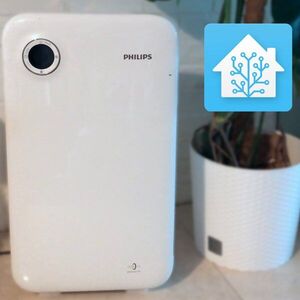
Making an old Air Purifier smart
"adding the Phillips AC4014 to a Home Assistant network The Phillips AC4014 is certainly not the newest model of an air purifier, but I have some of them and they still work perfectly fine. Filters are readily available, so I wanted to integrate them into my Home Assistant smart home system. One requirement was that it could still be used as originally intended, the other that I want to keep the hack as minimal invasive as possible. After trying to understand the original electronics I decided to simply add a galvanic separated circuit. Two relays are added to the contacts of the original switches for the on/off button and for the fan speed. Since the Air Purifier can still be operated also manually, there is the need to measure its status." [...]
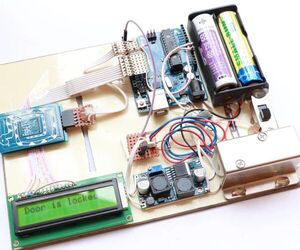
RFID/NFC Door Lock
"Oftentimes, we need to secure a room at our home or office (perhaps a secret dexters laboratory) so that no one can access the room without our permission and ensure protection against theft or loss of our important accessories and assets. There are so many readymade security systems present today but behind the scene, for authentication they all relay on fingerprint, retina scanner, iris scanner, face id, tongue scanner, RFID reader, password, pin, patterns, etc. Of all the solutions the low-cost one is to use a password or pin-based system. - Nilanjan Roy It is always a pleasure for a maker to make something by himself. In this project, I am going to share with you how I made a prototype of an RFID/NFC control secure door lock. By following this project you will be able to make a secure door lock by yourself very easily." [...]
Secção Videos
Videos interessantes.
That's all Folks!



